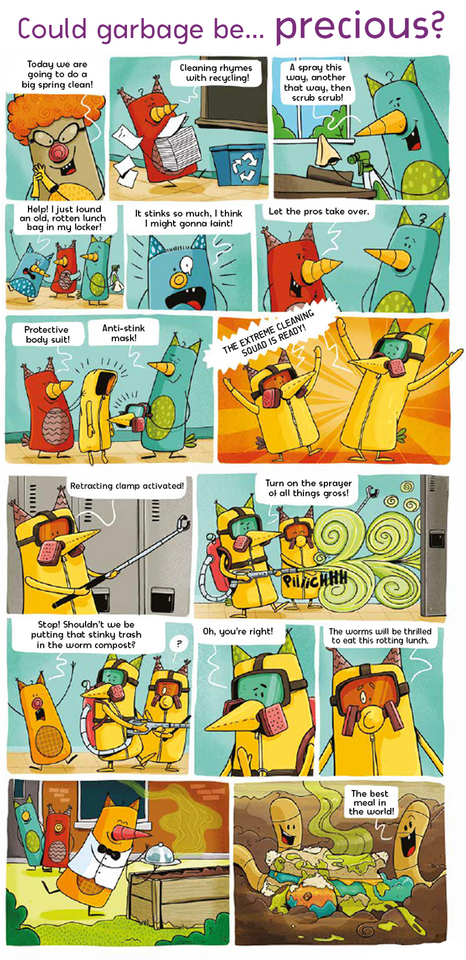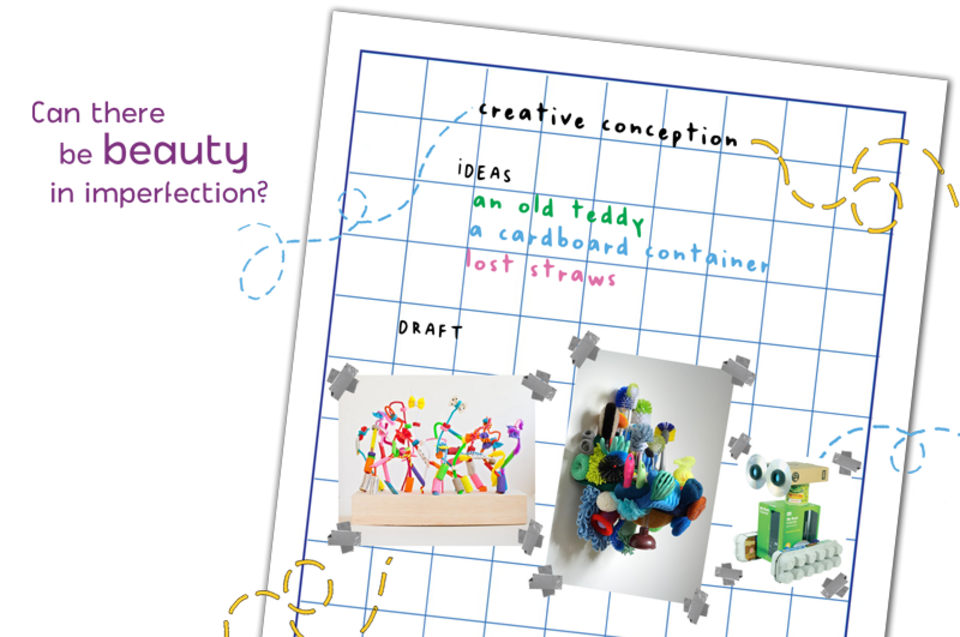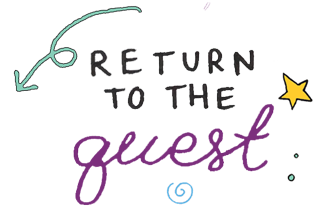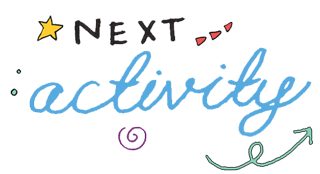
Resilient treasure (Part 1)
| Objective: To plan the creation of your resilient treasure! |
Duration : 60 to 90 minutes
Material :
-
A sheet of paper
-
Pencils and eraser
- A rejected object
Instructions :
Kintsugi is an ancestral Japanese art that involves repairing an object by gluing its broken pieces with gold powder. As a result, an object that could have been thrown away proudly bears its wounds, and can even become all the more precious. Kintsugi, sometimes also called the art of resilience, is part of the broader Japanese philosophy of Wabi-Sabi, which recognizes the beauty of imperfect things that bear the mark of time...
...
-
Prepare the sheet. Inspired by the art of Kintsugi, your mission will be to create a resilient treasure using a discarded object that may have been mistakenly deemed as worthless waste! To help you get lots of ideas and organize them, prepare your sheet by drawing a horizontal line to separate it into two equal rectangles. In the top rectangle write "ideas" and in the bottom rectangle write "draft."
-
Think about your first ideas. To support your conception, follow the next steps—while also letting your imagination run wild—and write down all your ideas in the "ideas" part of your sheet.
- Start by looking around for a discarded object that could become your resilient treasure. Maybe you can find an abandoned toy, rummage through a recycling bin, or ask your parents if a there is something broken lurking somewhere in the back of a cupboard...
- Once you have found your object, observe it carefully. Has its history left any marks... like a torn section, a bumpy surface, a sunken corner? What stories can these scars tell you? Was a teddy bear hugged too much? Or was a cardboard box used to protect groceries? Did a radio bravely offer information to a family?
- Finally, ask yourself how you could turn the discarded object into a resilient treasure, finding inspiration it its story and in the definition of resilience you gave for the Idea stretching activity. Perhaps you could celebrate the resistance of the object by mending its rips and slits with coloured thread or highlighting its cracks with a little paint. Maybe you could give it a new function to show its adaptability, or turn it into a work of art expressing a message of hope!
-
Sketch your ideas. Now that you have a bunch of great ideas, it's time to see what they look like! In the “draft” area of your sheet, draw a sketch of your resilient treasure. This will allow you to test your ideas and change them if necessary before putting everything together. You'll find that you'll have lots of new ideas as you start to create!
That's all for now! Don't forget that this activity is only the first part of your creative project! You can start the second part— Creative Construction —right after this one or after you've done the Philosophical Picnic, but we recommend that you at least take a break. You've earned it!
...
Bonus : In the comic strip below, the whole class is busy doing some spring cleaning! To get their surroundings spick and span, students must distinguish between what is precious and what is waste. But how can they tell the difference? Is it that obvious? Should old food leftovers from the cafeteria be thrown out... or might they be a precious treasure for the little worms that feed on them and produce compost? What gives a thing value? What about a person—what determines their worth? If it’s rotten, is it necessarily rubbish? Why or why not? |

This comic strip is reproduced with permission from the philosophy columns of our community partner Les Explorateurs magazine. It was produced in collaboration with our team at the Institute of Philosophy, Citizenship and Youth.

| Tricks for tots : Sit in front of your recycling bin and imagine that the items inside are refusing to be thrown out, only to end up on the street. They won't let their difficult situation get them down! What if, instead of abandoning these objects to their fate as litter, you instead took the time to discover them anew? What could they still be or become? Grab a random object and imagine how it could become a resilient treasure. Could a cardboard box become a souvenir chest? Could a bottle turn into a flower pot? Could a can transform itself into a pencil case? Could a piece of styrofoam become a work of art? |
| Tips for teens : The philosopher Walter Benjamin has striven to unearth the secret of an era by considering its waste. He catalogues everything that society "has rejected, everything it has lost, everything it has despised, everything it has broken." He collects these scraps as treasures of resistance that he argues can be seen as both the archives of capitalism’s debauchery and the possibility of transitioning to a new society. These treasures are not necessarily objects— can also be human figures. The characters of the flâneur, for example, are rejected by society because they prefer walking around and enjoying the sun than work. Their existence challenges the need for productivity by showing another possible form of existence. According to Benjamin, what is rejected or rendered useless by established norms turns out to be precisely what we need. What can your discarded object reveal about society? Is it the result of overpackaging or planned obsolescence? Could it challenge the necessity of producing waste or of buying new things? Think about why your object is considered as waste and how it might be perceived differently! |
Share your creative reflections by sending them via email.
Include photos of your projects and notes of your thoughts, as well as your first name and your age!


